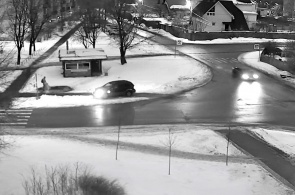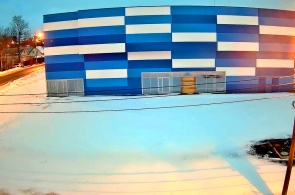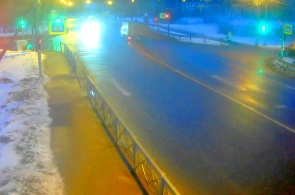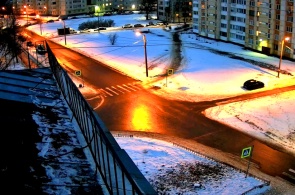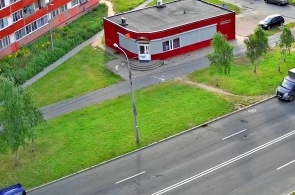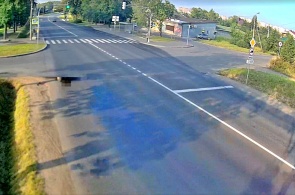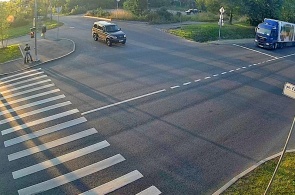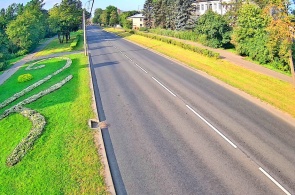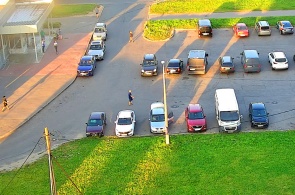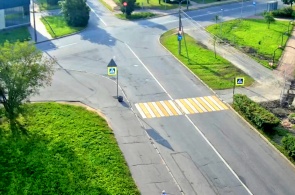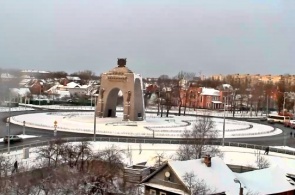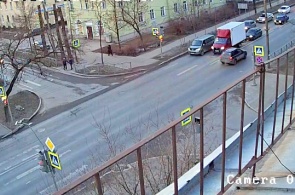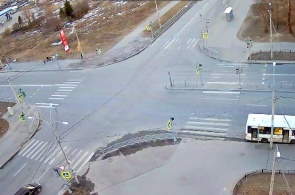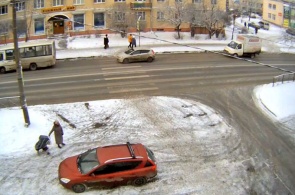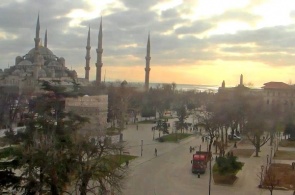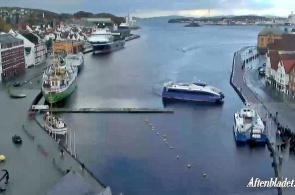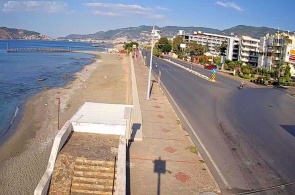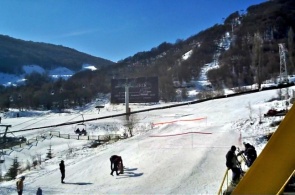The City Of Krasnoye Selotechnically considered an administrative unit, belonging to the Petersburg. This wonderful St. Petersburg suburb is mentioned in the famous novel "Anna Karenina", and to this day has a historic district called "Village Races". The city appeared on the map at the beginning of the XVIII century. Then it was a factory worker village at the paper mill, built by Peter I. there lived serfs relocated from neighbouring villages, particularly the suburban village of Red, so that the village received the same name. It should be noted that in the city, near the shores of the pristine lake Nameless, is the neighborhood, which is called Factory village. After a couple of decades after its founding, it was built the Holy Trinity Church that pleases the congregation with their worship to this day. It is around this temple was used for the construction of the red Village. Trinity Church has a matchless features, which incorporates elements of both the early and late Baroque. In Catherine's era, this place was called the "summer capital of the Imperial military guard." There were exercises, reviews and parades of the troops of the Petersburg garrison. In the XIX century here was established a large military training area with a huge parade ground, with a total area of over 200 m2. A particularly strong shock, the city has experienced in the years of the great Patriotic war, when for 3-year occupation of the Nazis, there were destroyed almost all the city's buildings. Among the few surviving buildings of the Village of red was the Alexander Nevsky Cathedral built in the XIX century. Stunning external and internal decoration of the Church, with its lavish lace decoration that pleases the eye of the parishioners today. In the walls of the temple houses the icon of Simeon the righteous, which according to legend appeared in a place suddenly formed source. Due to topography, rich in hills, there was particularly fierce fighting. Now in the Red Village, a large number of monuments and memorial complexes dedicated to the Victory over fascism and the people who brought it to their lives. Among the most modern war memorials, it should be notedThe Arch Of Victorylike the one that stood in 1945-m to year on Srednyaya Rogatka on the southern border of Leningrad. Another historic district of the city is the Mozhayskiy district, of the same square, named by the name of the legendary rear Admiral and a brilliant inventor, aviation pioneer and military leader Alexander Fedorovich.
More details
The Krasnoe Selo webcam is located at the intersection of Gvardeiskaya and Lermontov streets. The lens covers the movement of vehicles along the road junction and adjacent territories. In this area of the city there are apartment buildings, several shops, a library. The broadcast is transmitted in real time.
Red village, Russia
03.04.23
The Krasnoye Selo webcam is located at the construction site during the construction of a new city building near Lenin Avenue, 85. Thanks to the broadcast in real time, everyone can follow the situation, as well as observe the process of building a new facility, which will be located at Svoboda, 31
Red village, Russia
01.04.23
The Krasnoye Selo webcam broadcasts a view of the intersection of May Day Street and Krasnye Komandirov Street. In this area there is FC "Druzhba", the Redville residence hotel, a large park Krasnoe Selo, a hypermarket, residential buildings. The broadcast is transmitted in real time.
Red village, Russia
30.03.23
The Krasnoye Selo webcam broadcasts a view of the intersection of Lermontov and Massalsky streets. The lens covers the roadbed and adjacent sidewalks, houses. The intersection is bordered by residential buildings, Kindergarten, Boiler Room No. 1. Real-time broadcasting allows you to monitor the current situation and weather in a given area.
Red village, Russia
17.03.23
The webcam is located on Spirina Street in Krasnoye Selo. The device opens a view from the angle of the house No. 9 k1. The lens captures the roadbed, adjoining sidewalks with lawns and birch trees. Behind you can see a multi-storey building. In the foreground is a low-rise building in which a store operates.
Red village, Russia
24.10.22
Webcam overlooking the intersection of Lenin and Grazhdanskaya streets in Krasnoye Selo (St. Petersburg). The lens covers the road junction and traffic on it. As well as part of the adjoining sidewalks. The device allows you to monitor the situation on the road, as well as the weather in real time.
Red village, Russia
20.10.22
Device overlooking the intersection of Lenin and Grazhdanskaya streets in Krasnoye Selo. The lens covers a wide roadway and adjoining roadsides with green spaces, gutters. The situation on the road and weather conditions can be monitored online from anywhere in the country and the world.
Red village, Russia
17.10.22
The Krasnoe Selo webcam opens one of the angles of the intersection between Lenin and Grazhdanskaya streets. The lens is aimed at the pedestrian crossing and the adjoining part of the road. Fragments of sidewalks are visible in the foreground and background. The broadcast is transmitted in real time.
Red village, Russia
11.10.22
The Krasnoye Selo city webcam opens a view of Lenin Avenue near the house number 76. The lens captures the roadbed, adjacent landscaped sidewalks with figured flower beds and lush green spaces that can be seen in the warm season. Regardless of the season, the broadcast is in real time.
Red village, Russia
08.10.22
The Krasnoe Selo webcam broadcasts a view of the parking lot near Strelnitskoye Highway 4. The lens covers a spacious area and adjacent territories. Thanks to the broadcast in real time, you can observe the situation, as well as track the availability of seats.
Red village, Russia
04.10.22
Webcam of Krasnoe Selo with a view of the pedestrian crossing on the Strelnitsky highway. The lens covers the roadway with markings for pedestrians, adjacent landscaped sidewalks with paths and lawns. The broadcast is in real time.
Red village, Russia
30.09.22
Camera overlooking one of the most important monuments of the red Village – the arch of Victory. The monument was opened in 2015 year and timed to the 70th anniversary of the victory over fascist aggressors. The monument stands on the round square of Military Glory, at the entrance to the city from the Gatchina and Kingisepp highway. Nearby is a small Park – Mozhaisk square, with the monument to the Russian inventor A. F. Mozhaysky.
Red village, Russia
26.03.16
The camera will provide a live broadcast from the crossroads of Lenin Avenue and guard street in Krasnoe Selo (St.-Petersburg). Nearby – Children's library, several food service establishments and residential houses. From here, you can quickly get to two large city parks – the Upper and Lower garden and also one of the important iconic landmarks of the city – Trinity Church.
Red village, Russia
26.03.16
Camera fixed at the intersection of the Gatchina highway street Krasnogorodskiy in the Red Selo. This area of the outskirts of the city. There are sleeping quarters, schools, kindergartens, branch Bank, several shops and stops of public transport to the train station, town Vilasi, CT. metro Moskovskaya in Saint-Petersburg.
Red village, Russia
24.03.16
Webcam with a view of the Lenin Avenue in Krasnoe Selo (St.-Petersburg). The lens gets the crosswalk, vehicular traffic, sidewalks, and adjacent buildings. The Avenue starts from the Gatchina railway lines and extends to the intersection of ul Recovery, Gatchina and Kingisepp highway.
Red village, Russia
24.03.16
popular camerasshow all
Sultanahmet or Blue mosque is a work of art of Turkish-Islamic architecture. Its construction began in 1609, the construction work took seven years to a 19-year-old Sultan. The name of the mosque was, due to its interesting and unique finish.
Istanbul, Turkey
Stavanger, a town in the commune of Norway, located in the South-Western part of the country, on the Peninsula, rich in minerals. Tanager combines the influence of foreign organisations such as NATO and oil companies. The camera will shoot the harbour and the promenade of the city.
Stavanger, Norway
A webcam broadcasts the district of Tosmur - quiet location in the Eastern part of Alanya, located only five kilometres from the city centre. Its rural way of life and the beauty of untouched nature attract tourists.
Alanya, Turkey
Shark Island or in English of Shark island, located in the harbour city of Sydney, the suburb of Point Piper. The locals, the natives named the island Boambilly, which translated means Shark island. After all, this name is not casual, because it's mean and looks like a shark fin.
Sydney, Australia
The webcam is installed on site Alva. Tsaghkadzor ski resort town in Armenia. Tsaghkadzor is a beautiful mountainous area among deciduous forests, with a pleasant winter climate, and clean fresh air. The highest point is 1800 meters. The truss type is a classic, divided into three.
Tsakhkadzor, Armenia

